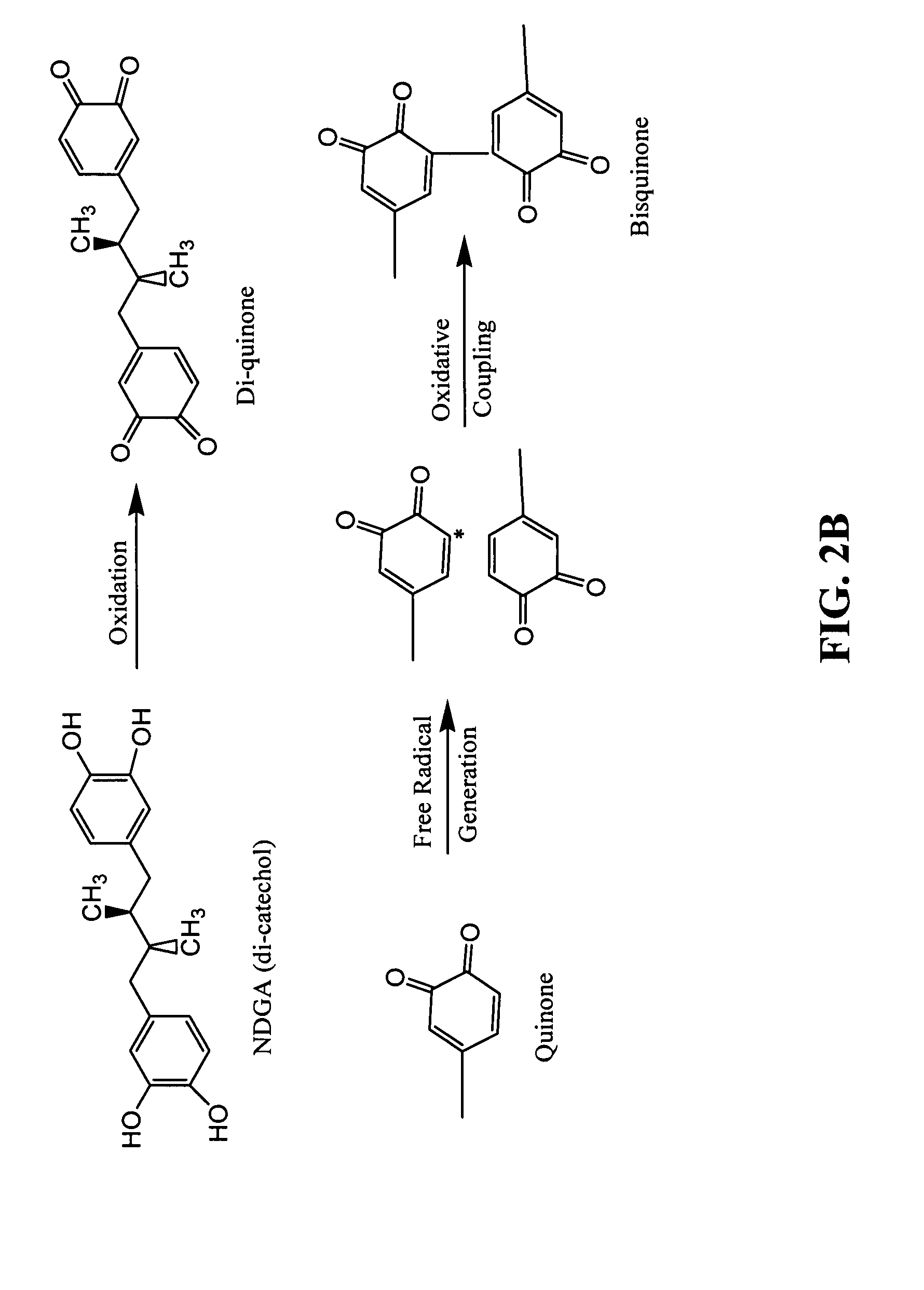Collagen scaffolds, medical implants with same and methods of use
a technology of collagen scaffold and medical implants, applied in the field of collagen scaffold coverings, can solve the problems of adverse reactions leading to blood clot formation in some patients, devices may provoke inflammation and/or fibrosis, other unwanted bioreactions, etc., and achieve the effect of improving biocompatibility and reducing the risk of adverse reactions
- Summary
- Abstract
- Description
- Claims
- Application Information
AI Technical Summary
Benefits of technology
Problems solved by technology
Method used
Image
Examples
example 1
Preparation of Porous Cross-Linked Collagen Scaffolds
[0082] The chemistry of the NDGA cross-linking reaction differs from the reaction using the GA treatment (FIG. 2). GA is the most common cross-linking agent used for fixation of collagen scaffolds for tissue bioengineering. Both aldehyde functional groups of the GA molecule react with amine groups between two neighboring polypeptide chains, particularly lysine side chains. Unfortunately, GA cross-linking is encumbered with potential cytotoxicity problems caused by the presence of unreacted residual groups and / or the release of monomers and small polymers during enzymatic degradation (Huang-Lee et al., 1990; van Luyn et al., 1992).
[0083] NDGA is an alternative cross-linking agent which possesses reactive catechols. Collagen cross-linking with NDGA mimics the quinine tanning mechanism in the skate egg capsule. Catechol-quinone tanning systems are prevalent in a wide variety of animals, which the process serves to strengthen vulner...
example 2
In Vitro and In Vivo Evaluation of Porous Collagen Scaffolds
[0085] The biological stability of the cross-linked collagen scaffolds was investigated by in vitro and in vivo biodegradation tests. Degradation in both uncross-linked (control) and cross-linked scaffolds was characterized by determining weight loss of the scaffold after enzymatic digestion. The uncross-linked scaffolds and scaffolds cross-linked with GA for 2 hours were completely degraded in the collagenase solution within several hours while NDGA or GA cross-linked (for 12 h) scaffolds were not degraded within 24 hours. A significant increase in resistance to enzymatic digestion could be shown after cross-linking. FIG. 5 shows long-term collagenase in vitro degradation test (weight remaining %) of the NDGA and GA cross-linked scaffolds. After one week exposure to collagenase, both types of scaffolds showed high resistance to enzymatic digestion (>80% weight remaining). After three and four weeks, all scaffolds retained...
example 3
Porous Collagen Scaffolds Around Implantable Glucose Sensors
[0087] Coil-type glucose sensors loaded with cross-linked enzyme (GOD: Glucose Oxidase) were first fabricated by using Platinum-Iridium (Pt / Ir) wires. Then, bovine tendon type I collagen scaffolds were applied around the sensors (FIG. 1). Yu et al., 2006 previously reported that this “coil-type” sensor allows more GOD loading, provides a larger electrochemical surface area, and therefore increases the response current as compared to a “needle-type” sensor. The coil-type sensor of the invention is flexible and miniaturized (0.5 mm dia.) for subcutaneous implantation. It is composed of a two-electrode system with a glucose indicating platinum electrode and a Ag / AgCl reference-counter electrode. A sensor of the present invention utilizes a three-layer membrane configuration of cross-linked collagen scaffold, epoxy-polyurethane (Epoxy-PU) and GOD. The collagen scaffold (the outer layer in this case) can uptake 99% of its dry w...
PUM
| Property | Measurement | Unit |
|---|---|---|
| Pore size | aaaaa | aaaaa |
| Diameter | aaaaa | aaaaa |
| Diameter | aaaaa | aaaaa |
Abstract
Description
Claims
Application Information
 Login to View More
Login to View More - R&D
- Intellectual Property
- Life Sciences
- Materials
- Tech Scout
- Unparalleled Data Quality
- Higher Quality Content
- 60% Fewer Hallucinations
Browse by: Latest US Patents, China's latest patents, Technical Efficacy Thesaurus, Application Domain, Technology Topic, Popular Technical Reports.
© 2025 PatSnap. All rights reserved.Legal|Privacy policy|Modern Slavery Act Transparency Statement|Sitemap|About US| Contact US: help@patsnap.com



